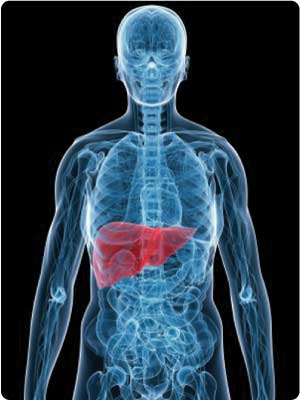 September 11, 2009 - A team of scientists at the University of California, Riverside has found that even second-hand tobacco smoke (SHS, environmental tobacco smoke, ETS, passive, involuntary, sidestream) exposure can result in nonalcoholic fatty liver disease (NAFLD), a common disease and rising cause of chronic liver injury in which fat accumulates in the liver of people who drink little or no alcohol.
September 11, 2009 - A team of scientists at the University of California, Riverside has found that even second-hand tobacco smoke (SHS, environmental tobacco smoke, ETS, passive, involuntary, sidestream) exposure can result in nonalcoholic fatty liver disease (NAFLD), a common disease and rising cause of chronic liver injury in which fat accumulates in the liver of people who drink little or no alcohol.
PAPER: Second-hand smoke stimulates lipid accumulation in the liver by modulating AMPK and SREBP-1, Hongwei Yuan, John Y.-J. Shyy, Manuela Martins-Green, Journal of Hepatology September 2009 (Vol. 51, Issue 3, Pages 430-432), ABSTRACT...
The researchers found fat accumulated in liver cells of mice exposed to second-hand cigarette smoke for a year in the lab. Such fat buildup is a sign of NAFLD, leading eventually to liver dysfunction.
The study emphasizes that discouraging cigarette smoking helps prevent not only cardiovascular disease, pulmonary disease and cancer, but now also liver disease.
Second-hand smoke is a major toxicant that affects children, the elderly and nonsmokers living in the household of adults who smoke. Many state and local governments have passed laws prohibiting smoking in public facilities. Diseases associated with second-hand smoking include cancer, heart disease, atherosclerosis, pneumonia, bronchitis and severe asthma.
"The debate is over. The science is clear," the former U.S. Surgeon General Richard Carmona, MD, told reporters in June 2006. "There is no risk-free level of secondhand smoke exposure.."
Reference: Second-Hand Smoking Results in Liver Disease, Study Finds, Univeristy of California at Riverside Newsroom, 9/10/2009.
Bringing the World of Tobacco Control closer together..
Secondhand smoke exposure and liver disease..
Subscribe to:
Post Comments (Atom)


To Provide Public Awareness
Purpose
About Us
Contact Us
2008 HIGHLIGHTS
TOPIX PAPERS - 2008 & 2009..
Archive
-
▼
2009 (1446)
-
▼
09/06 - 09/13 (31)
- Spain - impact of 2006 law banning smoking in pub...
- Dutch government will change law to keep bars smok...
- Santa Cruz, CA - extends outdoor smoking ban..
- Croatian government gives in loosens public smokin...
- Stop smoking ASAP to reduce risk of breast cancer..
- Smokers with multiple sclerosis (MS) show more b...
- Australia - Smoking 'biggest factor' in Aboriginal...
- Secondhand smoke exposure and liver disease..
- Dark skinned smokers greater dependence, binding ...
- Pennsylvania - September 11th, one year after smok...
- San Francisco can enforce its ban on tobacco sales...
- Malawi - deports leaf tobacco merchants for paying...
- Peninsular Malaysia - one of three cigarette packs...
- Chantix - another wrongful death lawsuit filed..
- Altria - more Barclays Conference - comments ment...
- Altria - Barclays Conference - new version of Cope...
- Hong Kong - Is the fixed-penalty fine for smoking ...
- Hong Kong - more unions are starting to enforce ex...
- Hong Kong - unions refuse to hand out penalty tic...
- Canada - nearly one in five packs of cigarettes sm...
- Florida - tobacco sales down in wake of new tax..
- Kansas - cigarette makers fined, failed to pay ...
- Export of Chinese modern cigarettes to Middle Eas...
- PMI - lays off more than 300 workers in Serbia..
- Altria - lobbying effort, spent more than $3.9 m...
- U.S. - Importer tries to get around clove cigarett...
- Australia - Smuggling of illegal cigarettes has h...
- Australia - government's plan to reduce preventabl...
- Australia - banning cigarette sales in pubs and cl...
- Turkey - with expansion of smoking ban cigarette ...
- Indonesia - an NGO commission assists cigarettes m...
-
▼
09/06 - 09/13 (31)
© Copyright Notice: The content of this website is for information education purposes only and any newsbrief may be used only as "fair use" for information/education purposes with permission of the authors and providing that original references and associated reference links are included in HTML format.
0 comments:
Post a Comment